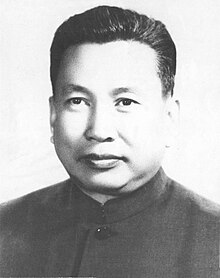Angkar which loosely translates to “the organization” in the Khmer language was what the Democratic Kampuchea government both referred to itself and was referred to be citizens during the Pol Pot regime.
As such the word was not only feared at the time but has become synonymous with Khmer Rouge rule and thus still holds negative connotations today.
The rise of Angkar
Despite it being widely known that there was a “Red Cambodian” AKA Khmer Rouge revolutionary group, the name of the party leading it, the leaders of the revolution and indeed who it was aligned with were shrouded in mystery.
This was particularly the case following the overthrow of Sihanouk and the formation of the Khmer Republic with many fighters thinking they were fighting for royalism rather than communism.
Things became even more opaque following the fall of Phnom Penh, with the victorious Communists even referring to themselves as the “Royal Government”.

The formation of Angkar
Therefore when the cities were emptied the paranoid Khmer Rouge, who still counted Sihanouk as an ally needed a term to refer to themselves, was picked the Angkar (អង្គការ), or organization. This truly Orwellian term was enough to both keep ambiguity, while also allowing them torelay their authority.
This secrecy would last from April 17th until September 29th 1977 when Pol Pot under the pressure of China delivered a 5 hour speech detailing the leadership of Democratic Kampuchea, as well as the leading role of the Communist Party of Kampuchea in government.
The paranoia that had led to such secret came from early on in the existence of the organization and basin some respects valid. In later Khmer Rouge and Democratic Kampuchea years the leadership became intensely paranoid about enemies both and abroad and within and indeed real as well as imagined.

Why did Angkar Reveal itself?
In part because etch revolution was at least according to the CPK leadership “going well”, but in the most part it was simply down to pressure from the Peoples Republic of China. China had not only been the ideological inspiration for much of the Khmer Rouge program, but were their only international friend and ally.
China for its part was coming to the end of the Mao reign of terror and after stories of the excesses coming out of Democratic Kampuchea wanted to present the “best side” of their allies.
It was though also for nationalistic and political reasons for Pol Pot. During this period he retconned the formation of the Communist Party of Kampuchea (CPK) to 1960 and the Workers Party of Kampuchea.
This was done to separate it from the Kampuchean Peoples Revolutionary Party (KPRP) which had been founded in 1951. And while this was officially done to show the “real communists” of the CPK, in actuality it allowed the rebels that would later overthrow the Khmer Rouge to retcon their own history by claiming their formation as 1951 and disavowing anything that had occurred after 1960.
Follwing the overthrow of Democratic Kampuchea Angkar retreated into the jungles under the new name of the Party of Democratic Kampuchea, while the KPRP became the new rulers of the Peoples Democratic Republic of Kampuchea in 1979.
They have remained in power ever since, although they are now known as the Cambodian Peoples Party.




